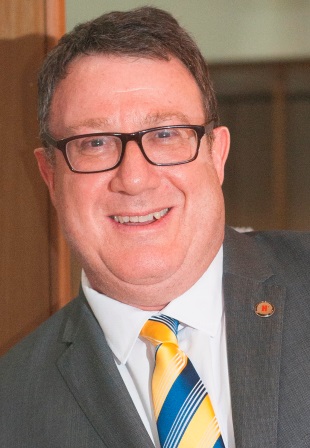GAVIN FINKELSTEIN
Gavin Finkelstein is President, Haemophilia Foundation Australia

The new World Federation of Hemophilia (WFH) guidelines for the management of haemophilia were published in August 2020. We have been advised by the Australian Haemophilia Centre Directors’ Organisation (AHCDO) that the Guidelines for the management of haemophilia in Australia (2016) will also be reviewed following this.
The WFH guidelines include a range of new recommendations following the innovations in treatment and care that have emerged in the last five years or so, such as the use of genetics in diagnosis, new treatment approaches and use of new products. The new guidelines recognise that haemophilia can be managed very differently than before, with a focus on achieving more effective haemostasis (blood clotting) and improved health outcomes.
However, as before, the new WFH guidelines are built on the very important framework for haemophilia care and treatment that includes:
This framework has existed in Australia since the National Blood Agreement (2003) when all governments agreed to share the cost of publicly-funded treatment products for people with bleeding disorders. It remains our preferred system, but it can be improved. On one hand it has been exciting to see the range of treatment options and new innovations coming globally, but frustrating that in Australia we experience long delays to access them.
HFA started a discussion in 2019 about the potential impact of delays to new and emerging therapies for our community. For example, extended half-life (EHL) clotting factors were first registered in Australia in 2014, and adopted as the standard care in similar health care economies for much longer, yet they only became publicly available to all Australians with haemophilia in July 2020 as a result of the recent government tenders. This is despite a positive recommendation from the Medical Services Advisory Committee (MSAC), which is the relevant government committee to review suitability for government funding for haemophilia treatments. A positive recommendation from MSAC is followed by processes under the National Blood Agreement to make new therapies available. EHLs will make a real difference to the health outcomes for many people with haemophilia A and haemophilia B in our community, and it is a relief they will now be available to everyone.
We came to a consensus with treating health professionals that some new medicines could lead to better health outcomes for patients and reduced costs for governments, but the process for timely evaluation and the issues that should be taken into account needed review. Recently I was pleased when the Federal government announced some health sector reviews of how medicines are assessed for funding. Some of this work will be relevant to bleeding disorders and we will participate.
At the time of writing, people with severe and moderate haemophilia A with and without inhibitors who could benefit from Hemlibra® still do not have access despite a favourable recommendation from MSAC. Hemlibra® is a new treatment option for adults and children with severe and moderate haemophilia A (with and without inhibitors), and many people treated with it report no bleeds at all. It is not HFA’s job to recommend specific treatments, but it is our job to advocate for a range of best practice publicly-funded treatment products so our members can decide with their treating doctor which product is best for them.
We are keen to demonstrate in the upcoming government reviews that new and emerging therapies that are life changing for patients, and will improve their health dramatically, can also be cost effective for governments. The problem is that some of the processes for evaluating these newer products are no longer fit for purpose. I look forward to our contributions to these reviews, and work with stakeholders to make sure the National Blood Agreement continues to ensure the most suitable treatment products for bleeding disorders are available to everyone across the country.
In closing, I wanted to mention that we continue to work with individuals from South Australia and the Northern Territory, although we do not have formal membership of the HFA Council. We are pleased we have been able to maintain an observer from South Australia on the Council and that community representatives are well engaged in the Haemophilia Treatment Network committee to ensure the patient voice is heard in South Australia.
Haemophilia Foundation Australia acknowledges the Traditional Owners and Custodians of Country throughout Australia, the land, waters and community where we walk, live, meet and work. We pay our respects to Elders past and present and extend that respect to all Aboriginal and Torres Strait Islander peoples.
Sign up for the latest news, events and our free National Haemophilia magazine